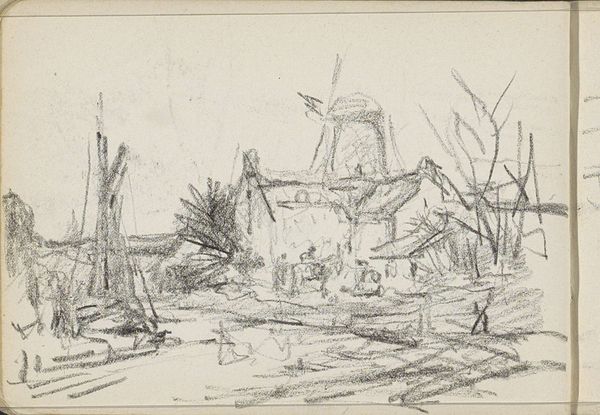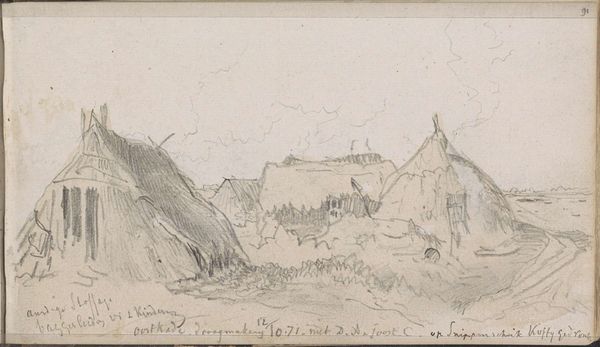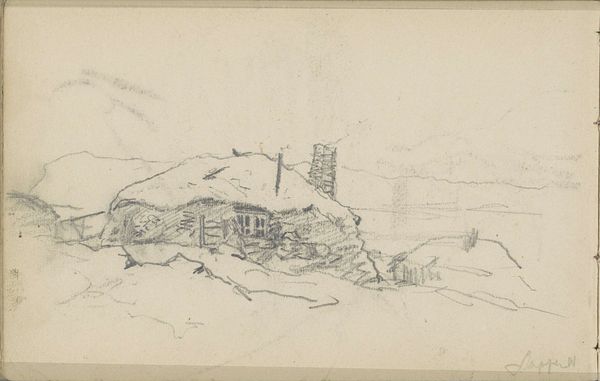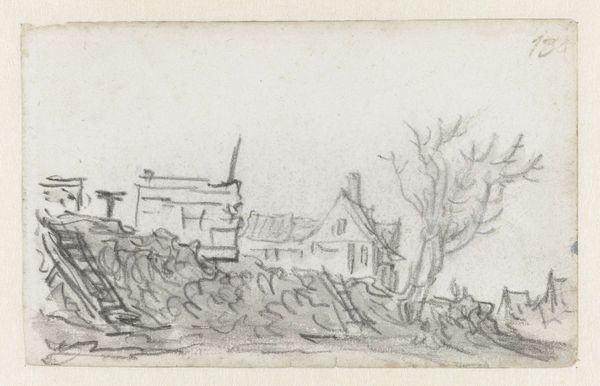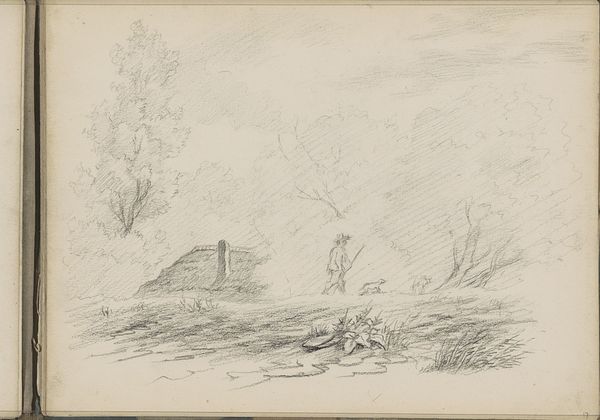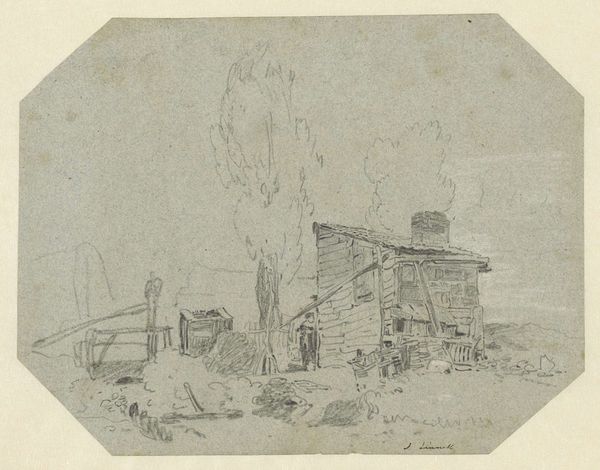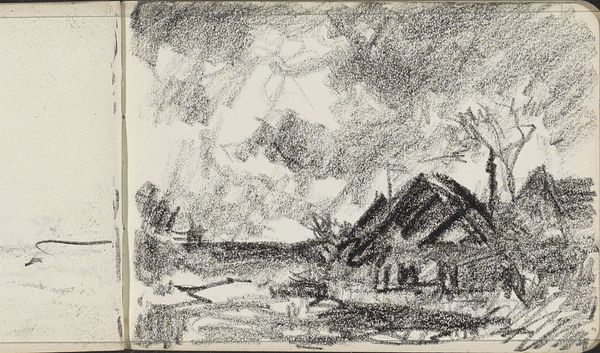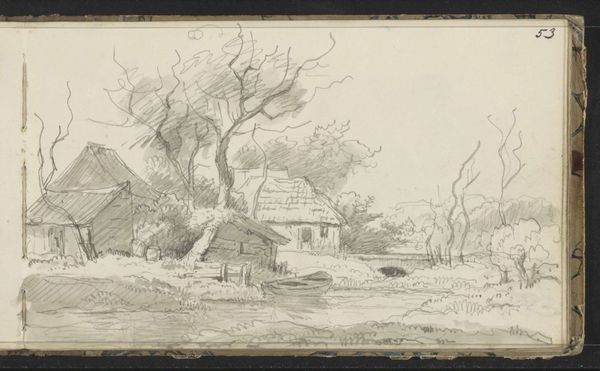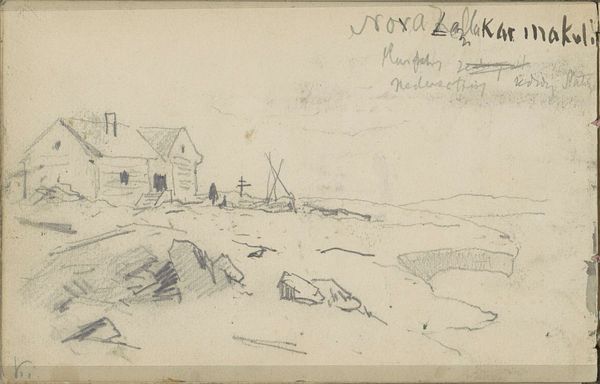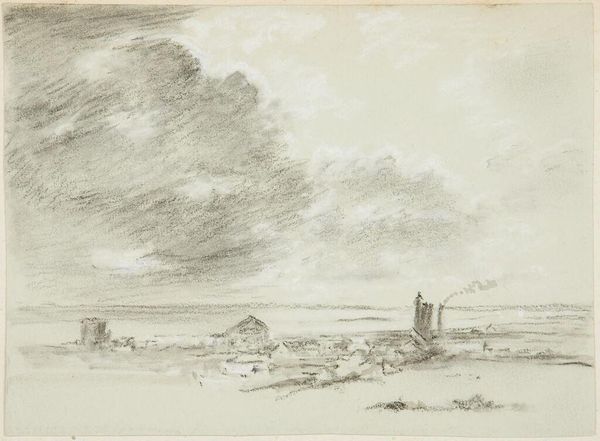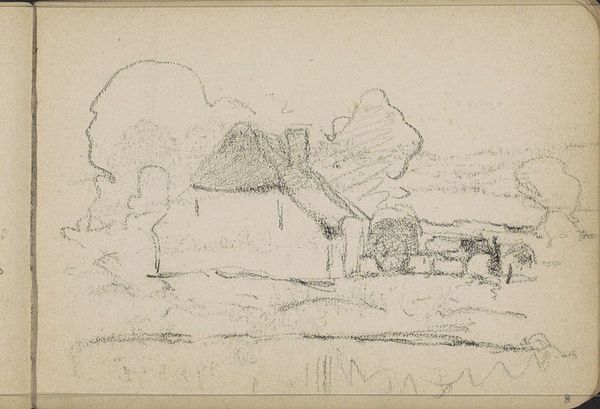
drawing, pencil, graphite
#
drawing
#
landscape
#
pencil
#
graphite
#
realism
Copyright: Rijks Museum: Open Domain
Curator: Immediately, I'm struck by the desolate stillness. It feels… profoundly lonely. Editor: Indeed. We are looking at a graphite drawing entitled "Gezicht op de Achterweg te Hammerfest," which translates to "View of the Back Road in Hammerfest," potentially dating from the 1880s, created by Louis Apol. It's a fine example of Dutch Realism, now held at the Rijksmuseum. Curator: Hammerfest… the northernmost city in the world at the time. It is no wonder one senses the isolation of the settlement in Apol's spare lines. The few structures sketched seem almost buried by the landscape, their dark silhouettes against a gray void. Editor: Consider also the cultural context. In the late 19th century, the Dutch artistic milieu, driven by social concerns, looked for inspiration to portray scenes of everyday life, and of ordinary labor in natural landscapes and unvarnished representations. This drawing documents the expansion of infrastructure toward the northern fringes. Curator: Are those figures in the distance? Barely more than smudges. But their inclusion humanizes the sketch. One imagines people braving harsh conditions to build new lives in the high North. Editor: Note how Apol uses the stark pencil strokes. It amplifies the emotional weight, mirroring a cultural moment, an epoch where industrial encroachment redefined perceptions of progress in the world. The artist carefully uses imagery for broader meaning. Even a seemingly mundane street carries so much ideological baggage. Curator: Do you find this unsettlingly poignant? It’s not just documenting progress. Perhaps it questions the true cost. Those figures trudging forward. For what? For whom? Editor: Apol invites us to question what exactly this “progress” represents. This bleak image underscores both social history and individual psychology, doesn’t it? Curator: I think it shows how symbolism embedded within these "realistic" scenes can trigger deep contemplation on the complexities of society and progress.
Comments
No comments
Be the first to comment and join the conversation on the ultimate creative platform.
